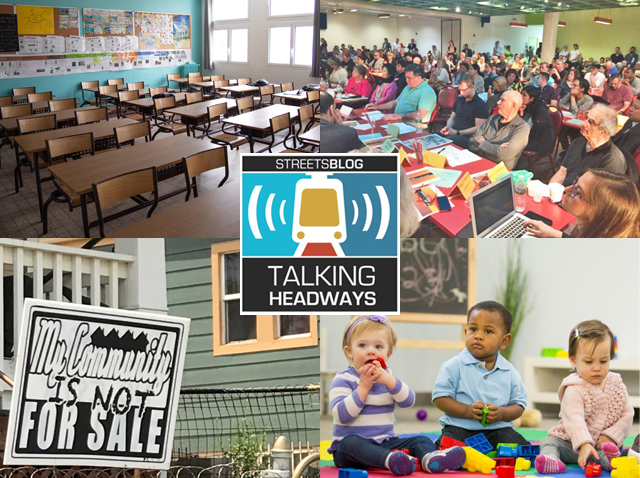This week, we’re joined by Dan Nissenbaum, CEO of the Low Income Investment Fund, for a talk about early childhood education, housing, and connecting transportation to community development.
For those of you who prefer to read rather than listen, an edited transcript is under the audio player. If you want the full unedited transcript (and don't mind a few typos), you can click here.
Jeff Wood: "Equity" is a funny term because you can talk about it from a capital standpoint, but you can also talk about it from a human standpoint. What does that mean to invest in racial equity, in a specific project? You know, what does that actually mean when you get onto the ground and you start investing in kind of the bricks and mortar of it all?
Dan Nissenbaum: Great question. So again, you can start with ownership and then you can start with who the beneficiaries will be, and then you can extend to the process. So for instance, we’re financing charter schools. We certainly look at where the charter school is located. We look at the population that we think the school will serve. We’ll look at the leadership of that school. Honestly, we won’t go deep into the pedagogy. We’re not education experts, but we will look at a set of equity indicators that we have worked on with other [projects] that look at community engagement, that look at discipline, that look at parental involvement. And so we will assess the degree of equity that we see, which will vary by asset class.
Housing will be different than a charter school. And we’ll use that as a screen in some ways. And a big part of that is community voice. Many projects in the world go through a "public approval process," and many lenders say, "OK, public approval, check the box." That was a community board meeting. Well, you and I probably both know that community boards and their processes may be inclusive, but are often not. And so we’re digging a little more deeply into that. And look, we’re trying to learn about this ourselves and try to come up with standards that we think are practical and authentic and will be well received. And so we’re doing all those kinds of things so that, and then there are different types of models.
There are community land trusts that we’ve been working on in innovating, so that it’s not just a building we’re financing that a low- or moderate-income person might live in. It’s an asset with community ownership that the residents actually own. We have also looked at other scenarios, such as the proximity of housing to high quality education. And we think that’s an important equity dimension.
I want to come back to early care and education. This is an area where we’ve decided to double down and where I think community development has touched, but not deeply enough.
Listen, if COVID showed us anything, it was that childcare matters and childcare is a crucial support. And ultimately childcare is something that we need to think about as a public good. Science, sociologists all have showed us that it’s really the years between zero to 2 or 3 that matter the most in terms of brain development and have the farthest reaching implications for how successful somebody will be, how healthy they will be and their economic prospects. So right now we have a childcare system that is a shambles. As you know, the irony is that particularly for lower-income families, childcare is among their most significant expense.
We talk a lot about housing and we talk about how for lower-income people, affordable housing is often half of their income. Childcare adds a significant amount as well. Yet the people who work in childcare facilities receive wages typically below the poverty line and need to rely on public benefits in order to survive and support their own families. Yet, if we don’t have childcare, nobody goes back to work. And we’ve also seen the implication and the reality that women are dropping out of the workforce because we don’t have a stable childcare system clearly for lower income communities and often communities of color.
This is even more pronounced and we have real childcare deserts and you have a whole system of informal care. So we have done a lot of work in this area. To date, the Low Income Investment Fund has invested almost $180 million in childcare facilities. We’ve supported almost 270,000 slots of childcare. And so we see this as a very important racial equity strategy that will bring needed investment to this sector that will support the entrepreneurs who run these centers, who are almost entirely women of color and who will support working families. And so we’re working with state governments.
We’ve been deploying CARES Act funding as emergency supports in factor in the pandemic. We raised $25 million, including CARES Act money, PPP loans, and private philanthropy, just to sort of buoy these owners through the pandemic. And in many cases, not just saving their businesses, but saving their homes because these are home-based providers in many cases. So this is a system that needs a significant amount of federal investment. The Biden administration has put forth in the rescue plan, $50 billion. It’s an amazing, amazing result for childcare, but it’s a bit of a one-shot and we are now working to get legislation passed that would include $10 billion for facilities financing.
So it’s a really important piece of community development that doesn’t often have the same visibility or funding as does housing or schools or other, but it is again, back to the social determinants of health. This is so primary, it’s the most important start and it’s where we’re failing most significantly. We need to change it.






